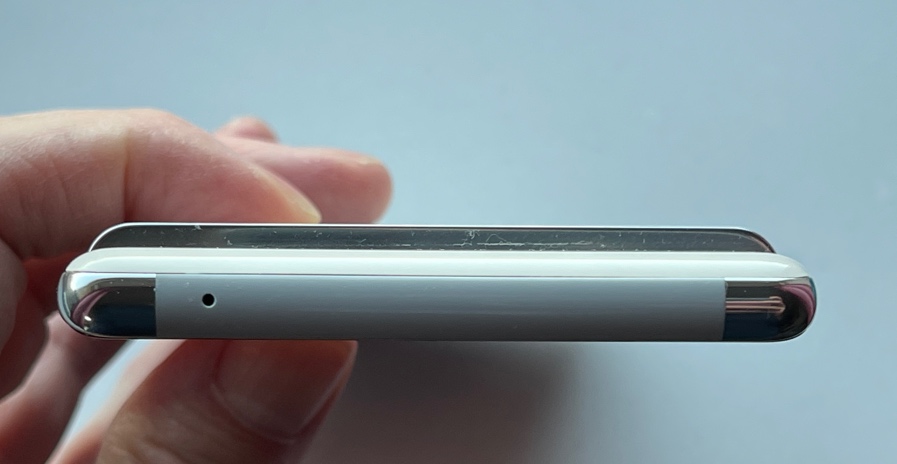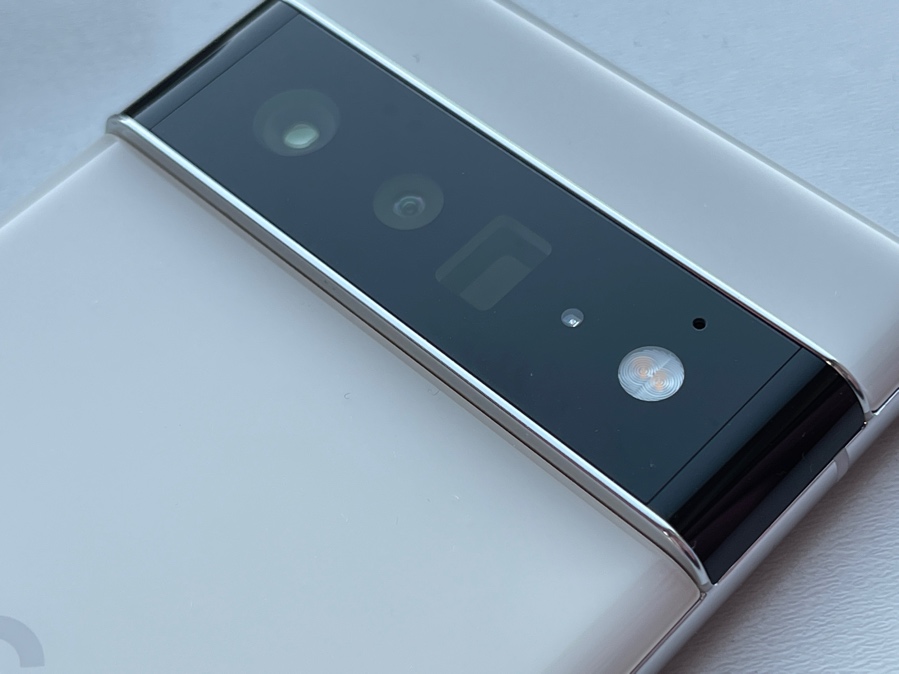Review: Google Pixel 6 Pro
Score:
79%
It's... Google's latest and greatest. It really is. The highest specced Pixel ever made. But that doesn't mean that it's perfect, as you'll see in my review. Niggles include the 'zoom gap' and a plastic top edge, but don't worry, there's also plenty that I loved. Whether it's worth £949 for the recommended 256GB model is your call, of course, but there's no denying the raw power and future proof software set-up. (See also my imaging comparison with a flagship iPhone.)
I’m a month later than the 'day 1 USA review mob' on this one, but as ever with Pixels, the longer you give Google, the more fixes you acquire, so what I’m looking at here is a slightly different beast to those original units, not least in terms of biometric authentication.
Starting out with superlatives
The Pixel 6 Pro is... absolutely the fastest and best Pixel ever made, it’s a magical, Google-centric experience and a feast for Android fans. The screen’s large, almost bezel-less, curved and clear, the Tensor processor is fast and flies with the 12GB RAM, even the battery is decent, if not quite in the league of last year’s Pixel 5 mid-ranger. And Google promises major updates for three years and two more years of security after that.
And pre-empting the imaging section below, for the most part (though not all), the camera is stunning, with incredible unzoomed photos - and incredible 4x zoom shots to add. But more on that later.
Exterior oddities
We’re used to phones having metal on all edges, with antenna bands breaking things up and allowing each metal section to act as an aerial for various cellular bands. The Pixel 6 Pro has these, but they’re not symmetrical down the bottom, which looks odd. Only a small thing, but then up top, metal has given way to plastic. And the only reason that I can see is that, in the USA, Verizon demanded RF access through the top for mmWave 5G. So Google made the top plastic for them and just… kept it for all Pixel 6 Pros worldwide without bothering to do another hardware variant. There’s even, inside, it has been proved, a dummy mmWave 5G aerial block doing absolutely nothing except taking up space.
Then there’s the otherwise excellent display that, for the core function of taking photos, doesn’t get boosted in terms of brightness when outdoors. So you’re shooting a bright sunny scene and, where iPhones or Samsung flagships (or even Lumias back in the day) would all give you a temporary extra oomph in the AMOLED display, Google keeps brightness the same and it can sometimes be hard to see exactly what you’re shooting and how focus is going.
The camera island is the most striking exterior feature and... I like it. The styling is distinctive and, for the 6 Pro model at least, the bulk is very much needed, since the imaging hardware is massive (see the screengrab in this piece). The only oddity here is the way all the edges come together (or rather don't) either side of the island. Although there are no sharp edges per se, the edges of the edges (if you see what I mean) do feel a little jarring.
Not that anyone's going to feel them day to day because the Pixel 6 range has olephobic glass on the back, meaning that a TPU case is not only advised, it's damn well mandatory. Without a case, I can be holding the phone normally in my hand and five seconds later I'm making a grab for it as it careers to the floor!
Imaging
Talking of the camera, I’m afraid that here we have the single biggest current compromise - which is a shame given Google’s pretensions and claims. Pixels have had, in recent years, Google’s rather clever Super Res Zoom software system, using the fact that the phone was always wobbled a little when handheld, just a few fractions of a millimetre up and down, so software could computationally combine several rapidly taken frames when zooming to grab data that would otherwise be between pixels in the smart cropped physical sensor.
While not being as good as genuine zoom optics, the system did work well and allowed Google to skip telephoto lenses completely in 2020. However… Super Res Zoom obviously relies on phone motion and the larger and heavier the phone, the less it’s possible to rely on the user moving the device enough to provide the pixel data needed.
On this heaviest Pixel, I’ve been testing and testing and - at least with the late November firmware in place here - I can’t see that Super Res Zoom is implemented on the 6 Pro’s primary camera... at all. Interestingly, it is present on the smaller Pixel 6, confirming that it's perhaps device size and weight that's perhaps to blame. Though I do have a suspicion that Google can tweak its Super Res Zoom algorithms for the 6 Pro and re-enable them in a future software update.
But I have to review the device as-is. Heck, I've already waited a month for updates before getting this far.
Regardless, not a problem, you think, there’s a huge 4x periscope lens and sensor to take care of zooming. And you’re right, for bird watching and snapping distant piers and towers. But without working Super Res Zoom (yet), there’s now a massive ‘zoom gap’ between 1x on the main sensor and that 4x telephoto. So every slight zoom - 2x, 3x, whatever - for casual subjects and framings - in fact, most of what people usually use zoom for, is now done using old fashioned lossy digital zoom on the 12MP Quad Bayer output from the main sensor.
At this point, go read my full Pixel 6 Pro imaging tests and comparison with a modern iPhone flagship (opens in another tab).
The results aren’t pretty and I can only think that Google intended to have Super Res Zoom working on this 'Pro' device when they specced it, and they had to disable it once the thing had been built because they found it didn’t work properly because of the weight and physics involved. Leaving one of the core features of the phone utterly compromised. Again, let’s hope that a simple software update can improve things here.
Most other aspects of the camera system are first rate. Simple non-zoomed photos are terrific, right up with the iPhone flagships of this world, often with almost identical results. Whatever the subject, whatever the light conditions, non-zoomed photos are crisp, detailed, perfectly exposed and with super colours. See the extra examples here, that weren't in my large comparison piece.
Low light shots ('Night Sight' mode) are excellent, see the 'lava' one above, but it's worth noting that these can take up to 10 seconds to capture. And there's no obvious way to abort capture, so under some circumstances you could be standing in someone's way or holding others up while your Pixel 'gathers light' for 10 seconds. It's not a huge problem, but it's worth noting, especially in comparison to the likes of the iPhone, which captures a similar low light image in a guaranteed 3 seconds.
Then, in good light and when you engage that f/3.5 4x periscope telephoto, results are also excellent, see the extra examples here.
You also get some clever photo modes under the ‘Motion’ heading, with ‘Action pan’, perfect for errr… snapping runners, cyclists and cars, and ‘long exposure’, where anything moving is blurred while keeping static elements aligned.
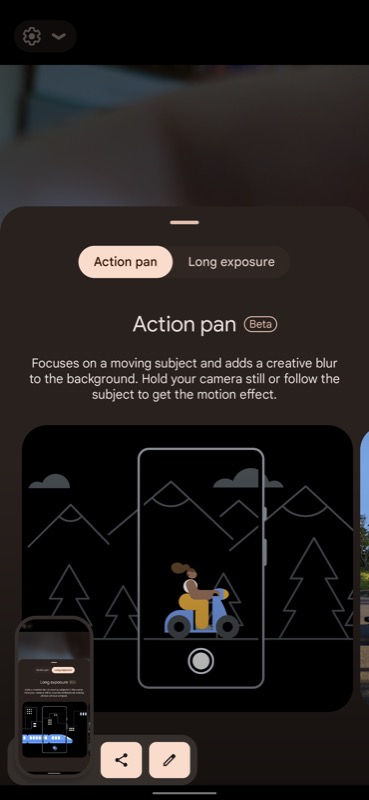

This all works even in very low light, and all handheld.
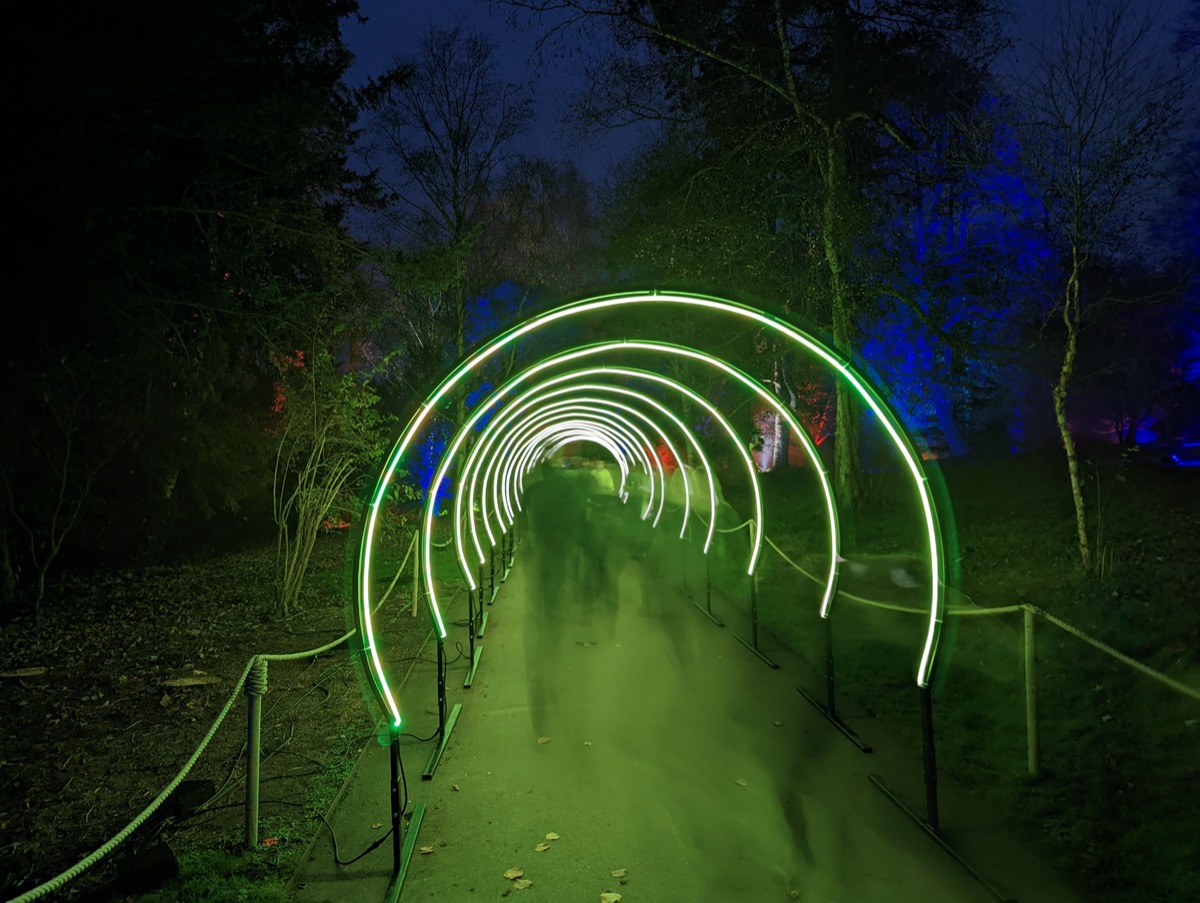
Impressive.
Google’s enthusiasm for HDR-everything does get wearisome for some subjects, either because you’re trying to demonstrate contrast and drama or when shooting people, who would much rather be less contrasty - see the Portrait mode example here.

Authentication
Up until last week, the optical fingerprint sensor was another possible committee compromise - the theory was that Google had settled for a cheap sensor that just didn’t work well. But an 80MB update appeared that turns down the degree of rigour that Google’s algorithms insisted on and now the sensor works OK, if slowly - even for me, with my worn down thumbprints! I still mourn the Pixel 4’s super face ID system, mind you, and hope that it makes a come back for the Pixel 7 next year.
Audio
You all know I like my phone speakers, and Google’s main speaker at the bottom of the Pixel 6 Pro is terrific, loud and with relatively decent bass. The earpiece speaker is less impressive, but the combined effect is eminently good enough for most people. Just don't be too picky as to the stereo balance, not just because of the imbalance in volumes, but because Google knows full well that the left/top channel is quieter and less capable and so it cross-mixes the stereo channels a little, so that the right/bottom speaker can take some of the workload.
In effect, the system has been 'tuned' to sound OK for most people. Mind you, the terrific speakers on the iPhone flagships are also tuned, in that bass frequencies are octave shifted up so that they're more audible, while my favourite Xperia 5 ii's speakers are 'tuned' by having a large haptic vibration system provide rumble for bass notes. So ALL of these phone speaker systems are cheating - to some degree!
Android 12
The Pixel 6 Pro is a big phone - very big, matching the iPhone Max models, which I’ve learned to live with, in fairness. And with a larger display, here 6.7” and 1440p, you want to be able to make the most of it. As usual with Android, I’m not convinced that Google has put much care and attention into how the interface scales and adapts to the extra real estate.


On the 6 Pro, I ended up with ‘Display size’ set to small, but it still didn’t seem quite right, though it did help a lot with the otherwise cartoony aspect of Android 12’s drop-downs. But at least the interface now feels more ‘Pro’ to me, at least.
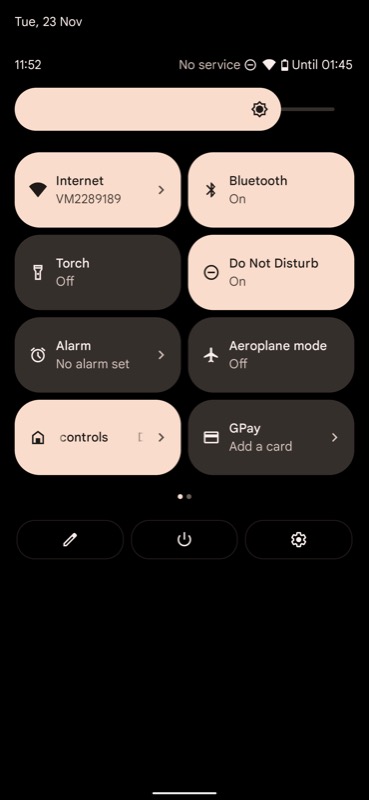
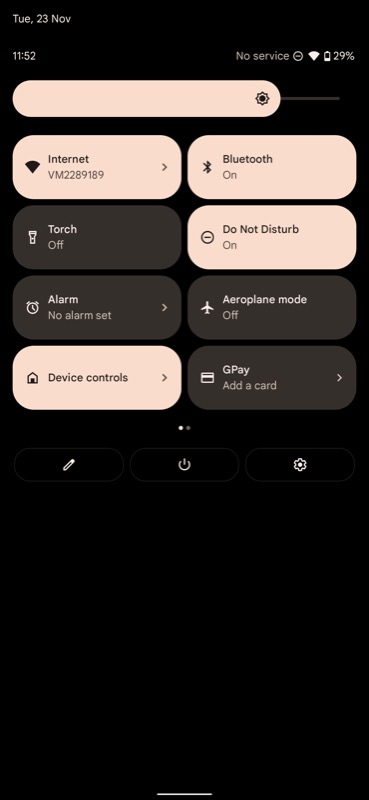
Default 'Display' size and knocking it one notch down...
Android on a Pixel remains full of delightful extras - the ‘Now Playing’ display on the lockscreen, recognising what’s playing in the room (as long as it’s not too niche - the 6 Pro had trouble with my Peter Frampton and Karnataka collections!), the live transcribe system that’s baked in, providing INSANELY accurate dictation - why bother typing anymore when you can just speak? It works well even with background noise, though do note that older Pixels also get this, so you don’t have to have the latest and greatest.
Battery and charging
Battery life with a 5000mAh cell should have been fantastic and it… isn’t, at least not yet, it's currently a single day device whereas you'd hope that 5000mAh would get you well into day two. Mind you, this is Google and software updates will keep improving this Pixel through the year, so let’s stay optimistic.
Google has gotten some stick for ‘only’ including 23W charging, but this is quite fast enough for Mr Physicist here, I know that heat is the enemy of Li-Ion batteries and longevity. And the Pixel 6 Pro never got too hot, even when charging at over 4A. So what if you need an emergency charge when you’re about to head out the door? Take a small power bank in your pocket for goodness sake and don’t compromise the health of your sealed phone battery!
Charging is via Type C or Qi wireless, always good to see the latter. There's also reverse wireless charging, activated through toggling on 'Battery share' in the drop-down quick settings.
Interestingly, Type C output is limited in not having a clever HDMI-out media projection system, let alone a desktop experience like Samsung's DeX. All this despite Google being rumoured to have been working on an official Android 'desktop' mode for years.
Value and verdict
With no microSD available, you’ll want a decent amount of storage, especially in a flagship, with synced media or loads of captured photos and videos, and I’d recommend the 256GB version of the Pixel 6 Pro, which unfortunately takes you up to £949 in the UK.
Whether this is too expensive will depend on how much you’re trying to avoid heading to an iPhone, how much you value the pure Google experience - and how much you’re prepared to overlook the aforementioned zoom gap for your snapping.
I’ve learned never to dismiss a Pixel out of hand, mind you, since they always get better three or six months down the line. Let’s see what Google can do with this one - I'm expecting battery improvements and the addition of Super Res Zoom to the main camera and I won't be able to wholeheartedly recommend the device until these updates arrive.
Reviewed by Steve Litchfield at


